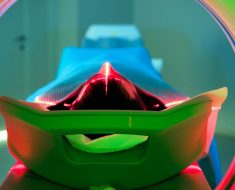
Objectives:
Despite recommendations by the U.S. Preventive Services Task Force and the Society for Vascular Surgery, adoption of screening for abdominal aortic aneurysms (AAA) remains low. One challenge is the low prevalence of AAA in the unscreened population, and therefore a low detection rate for AAA screenings. We sought to use machine learning to identify factors associated with the presence of AAA and create a model to identify individuals at highest risk for AAA, with the aim of increasing the detection rate of AAA screenings.
Methods:
A machine-learning model was trained using longitudinal medical records containing lab results, medications, and other data from our institutional database. A retrospective cohort study was performed identifying current or past smoking in patients aged 65 to 75 years and stratifying the patients by sex and smoking status as well as determining which patients had a confirmed diagnosis of AAA. The model was then adjusted to maximize fairness between sexes without significantly reducing precision and validated using 6-fold cross validation.
Results:
Validation of the algorithm on the single-center institutional data utilized 18,660 selected patients over 2 years and identified 314 AAA. There were 41 factors identified in the medical record included in the machine learning algorithm with several factors never having been previously identified to be associated with AAA. With an estimated 100 screening ultrasounds completed monthly, detection of AAA is increased with a lift of 200% using the algorithm as compared to screening based on guidelines. The increased detection of AAA in the model-selected individuals is statistically significant across all cut-off points.
Conclusions:
By utilizing a machine-learning model, we created a novel algorithm to detect patients who are at high risk for AAA. By selecting individuals at greatest risk for targeted screening, this algorithm resulted in a 200% lift in the detection of AAA when compared with standard screening guidelines. Using Machine learning, we also identified several new factors associated with the presence of AAA. This automated process has been integrated into our current workflows to improve screening rates and yield of high-risk individuals for AAA.
Keywords:
Aneurysm Screening; Aortic Aneurysm; Artificial intelligence; Machine learning; screening program.





